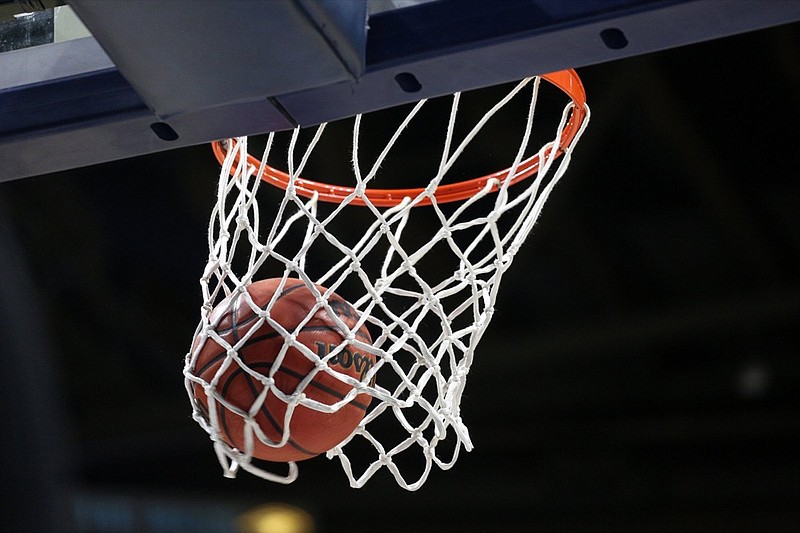If you're the University of Kansas basketball program, you have multiple reasons to be grumpier than the Grinch today.
For starters, despite defeating a very good Michigan State team in the Champions Classic to open the season, you lost your No. 1 ranking in the Associated Press poll the following week to Duke's freshman Fab Four of RJ Barrett, Tre Jones, Cam Reddish and Zion Williamson because the Blue Devils s crushed a vastly overrated Kentucky squad by 34 points in the same event.
Then you were denied the top spot again in Monday's AP poll because that same Duke team was stunned in Maui by Gonzaga, which is the new No. 1.
But the biggest slight came later on Monday, when the NCAA released its NET ratings, which were supposed to make more sense than the RPI rankings they were created to replace. Yet in the NET - which reportedly stands for NCAA Evaluation Tool - not only were the Jayhawks not No. 1, 2 or 3, they were ranked an unfathomable 11th.
That's right. Despite a 5-0 record, a win over Michigan State and a Preseason NIT championship game win over previously undefeated Tennessee, KU was judged to be no better than 11th.
To be fair to the NCAA, NET should probably stand for No Easy Task, for every formula attempting to rank college basketball teams will have its flaws and shortcomings and detractors.
Yet criticism of the Rating Percentage Index - or at least the selection committee's use of the RPI come the NCAA tournament's Selection Sunday - had grown so loud in recent years that college athletics' governing body strongly believed some significant change was necessary.
"What has been developed is a contemporary method of looking at teams analytically, using results-based and predictive metrics that will assist the Men's Basketball Committee as it reviews games throughout the season," said Dan Gavitt, senior vice president of basketball for the NCAA, when he introduced the NET.
"While no perfect rankings exist, using the results of past tournaments will help ensure that the rankings are built on an objective source of truth."
Still, if Monday's release of the first-ever NET ratings is a sign of things to come, NET might as well stand for Not Even Tolerable.
Naturally, we're dealing with a small sample size here. By the time both Kansas and Tennessee make their expected appearances in the NCAA tournament come March, they will have played at least 26 or 27 more games than they have thus far.
In fact, as angry as KU should be over the NET, Tennessee should be more so. The Volunteers, who stand No. 6 in the new AP poll, aren't even ranked in the top 25 of the NET.
Tweeted FiveThirtyEight statistical guru Nate Silver: "I guess I'm not sympathetic because a lot of smart people have worked on this problem (power rankings) for a LONG time and the NCAA ignored all that and came up with something that doesn't reflect methodological best practices and which doesn't make sense, basketball-wise."
How little sense does this new metric make? Ohio State, whose two biggest wins have come at Cincinnati and Creighton - neither of which is in this week's AP Top 25 or the NET top 25 - is the NET's Numero Uno.
The NET's next five are Virginia (6-0), Texas Tech (6-0), Michigan (6-0), Gonzaga (6-0) and Duke (5-1).
Conversely, the AP's top six are Gonzaga, Kansas, Duke, Virginia, Nevada and UT.
So why the disparities? How does OSU rise to No. 1 without a victory over a currently ranked team and with four of its wins against folks outside the top 200 of KenPom.com's power rankings: Purdue-Fort Wayne, South Carolina State, Samford and Cleveland State?
The NET bases its ranking on the following categories: strength of schedule, game results, net efficiency, winning percentage and winning percentage adjusted based on the location of games played. A second component gives teams the same credit for a home win over a top-30 team, a neutral site win over a top-50 team or a road win over a top-75 team.
Right or wrong, this new system will be the primary measurement used by the tournament selection committee for finalizing the NCAA tourney field of 68 teams.
Problems? Because your victory margin for any one game is capped at 10, Duke's 34-point thumping of Kentucky will only go down as a 10-point win.
Also, because the NET's efficiency rankings don't account for the quality of the opponent, a team with a net efficiency of 0.5 point against North Carolina A&T will get the same credit for that accomplishment as a team earning that mark against North Carolina.
Really? REALLY?
Yes, it's early. And the NET probably got at least one surprising ranking correct when it slotted Kentucky at No. 61. Anyone watching Cal's Cats stumble and bumble their way to unimpressive wins over VMI, Winthrop and Tennessee State last week knows they're far closer to No. 61 at the moment than either 6 or 1.
But there's no way, given their play to date, that Kansas is 11th or Tennessee is all the way outside the top 25.
Which is why, at least for now, Silver's words will also end this column.
Wrote the statistician's statistician: "The worst rankings I've ever seen in any sport, ever."
Contact Mark Wiedmer at mwiedmer@timesfreepress.com
